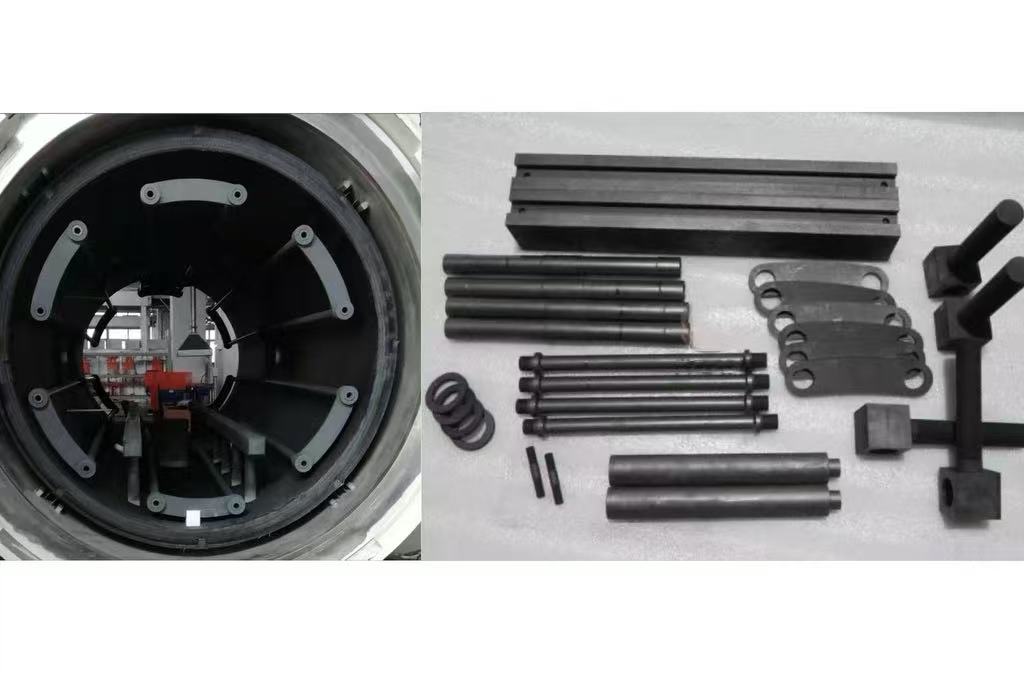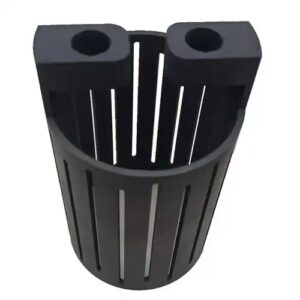Vacuum graphite furnaces enable heating of materials under a controlled low-pressure environment which is highly essential in a wide range of industrial applications. But, the right materials selection for these furnaces is very important for efficient & reliable operation of the system. Another class of materials that is of interest is graphite or graphite-like materials which behave differently at elevated temperatures. In this article we look at why in vacuum, graphite is the material of choice and the unique properties of graphite makes it such a fundamental part of the process.
Оглавление
ToggleCapacity of graphite in vacuum furnace
In high-temperature applications, graphite is preferred, for its work in вакуумные печи. It work where High temperature environment broke other material. Graphite is a must-have in the manufacturing of heat treatment for metals and ceramics alike.
The Case for Graphite – What Makes it so Special
The secret lies in the distinct structure of graphite consisting of hexagonally stacked carbon atoms that allows it to withstand temperatures of up to 3000°C without deterioration. Graphite is also naturally corrosion resistant, making it ideal for high heat applications—ideal for prolonging life in vacuum furnace applications for a variety of reasons.
High-Temperature Behavior of Graphite
Vacuum furnaces work at temperatures that would melt or destroy most materials. However, graphite retains mechanical stability and thermal stability at high temperature while also an indispensable material for the process of heat treatment, sintering and brazing.
Why You Should Choose Graphite to Improve or Enhance Conductivity?
Graphite has a very high thermal conductivity, which means that the temperature is distributed evenly throughout the area in the inside of the furnace — a crucial aspect to replicate results. This enables each energy type to be used efficiently and has the additional benefit of preventing overconcentration of heat locally from creating defects in the materials.
Weight as well as Strength
Most importantly, it’s relatively lightweight in spite of its high strength and heat resistance. This properties make the overhead handling and instalment in vacuum furnaces easy and economical, and hence reduces the labour cost and minimizes the wear and tear during handing.
Advantages of Graphite in Vacuum Furnaces
Optimal Performance in High Temperature Scenarios
Graphite can also withstand extremely high temperature without melting. This ensures it can be used simultaneously as heating elements and (stabilizing) structural parts in the furnace, thus enabling high-precision heat treatment processes.
Graphite Parts Preserve Energy Efficiency
Because graphite can conduct heat so well, less energy is needed in order to achieve stable temperatures. As this reduced the power required to heat the entire furnace, the overall energy savings was significant for a long time.
Easy-to-Machine custom design
Graphite machine easier than most of the high temp materials. This also allows the production of tailor-made (HM) parts and components (for instance heating elements, insulation, and more) trained for a fully customized vacuum furnace process.
Chemical Resistance for a Clean Process
Graphite exhibits great resistance to many chemicals, which is critical in vacuum furnace environments (the materials to be processed are often quite reactive). Because they are largely chemical resistant, it helps keep the process cleaner and free of contamination, resulting in higher quality end products.
Cost-Effectiveness Over Time
While the upfront cost of graphite may be higher when compared to other materials, its longevity and durability usually make it the most economical choice over time. The energy savings, together with the cost of maintenance, offsets the initial investment.
Graphite in Vacuum Furnaces: 5 Common Applications
Графитовые нагревательные элементы
The graphite is a kind of high temperature material with high temperature stability, so it is widely used as the нагревательный элемент of vacuum furnace. On the one hand, graphite has a low resistivity, and as a heating element, it can generate heat when powered on. On the other hand, graphite heating elements can stably withstand high temperatures of 3,000 tons in a vacuum or inert atmosphere, making them very suitable as heating materials.
Graphite Felt
It has extremely high thermal conductivity and plays a role in heat preservation and insulation in vacuum furnaces. This helps to retain heat at high temperatures and makes the furnace energy-efficient. In addition, graphite felt is lightweight, high in strength, and can withstand acid and alkali corrosive conditions. It is an indispensable thermal insulation material in non-oxidizing atmospheres of vacuum furnaces.
Graphite Fixtures and Holders
In an inert furnace, graphite fixtures and graphite holders are employed for positioning workpieces. The resistance of the material to deformation under high temperatures guarantees that these components will hold their shape and will not interfere with the process.
Heat treatment graphite retorts
Graphite retorts are used to hold materials inside the vacuum furnace. They are typically made of pure graphite or graphite composite. These retorts are or able of being exposed to the high temperatures and vacuum that are used inside a furnace for to control sintering or annealing, for example.
Industries That Rely on Graphite in Vacuum Furnaces
Aeronautics and Precision Manufacturing
Vacuum furnaces with graphite components are widely used in the aerospace industry for processes such as heat treatment and brazing, which demand incredibly high levels of precision and material integrity. The material’s thermal and chemical resistance gives the parts the endurance they need to survive the extreme conditions they will encounter in flight.
The Thermal Treatment Processes of Metal
That is widely used in as metal heat treatment like hardening, annealing, and tempering. The finish of graphite is also used in these processes because it can remain at a consistent elevated temperature without contamination.
Manufacturing of Electronics and Semiconductors
Vacuum furnace equipment is used in processes such as doping, sintering, and annealing in the semiconductor and electronics industries. That application requires a lot more graphite, allowing the passage of current and creating the right conditions for great-quality and accurate results.
Innovations in Graphite for Vacuum Furnaces
As science and technology develop, materials used in the vacuum furnace are renewed. This will allow the latest graphite materials and coatings innovations to be incorporated into the new designs and bring with it increased efficiency, durability and performance of the vacuum furnaces.
Graphite with a Protective Coating for Improved Durability
Advanced materials, like silicon carbide-based graphite coatings, are playing a role in extending the life of graphite components in vacuum furnaces. Adding to its durability, OLB graphite has coatings that further protect it from wear, oxidation, and corrosion.
Tailored to Your Unique Furnace Requirements
Instead, graphite parts are being designed based on the specific furnace model of application. Furnace manufactures have custom graphite jargon and techniques they perform within their fabrication. So that the components have specific properties to suit the requirements of the process that may include temperature ranges, chemical resistance, or composite strength.
Заключение
Graphite has become the main material of vacuum furnace. Some of the technology related to graphite includes high-temperature resistance, which makes graphite an economically viable portfolio, and its versatile nature. Regardless of whether or not your work is within the aerospace, electronics, or metal processing industry, having a better understanding of the benefits of graphite will empower you to select the best materials from which to construct your vacuum furnace processes.


